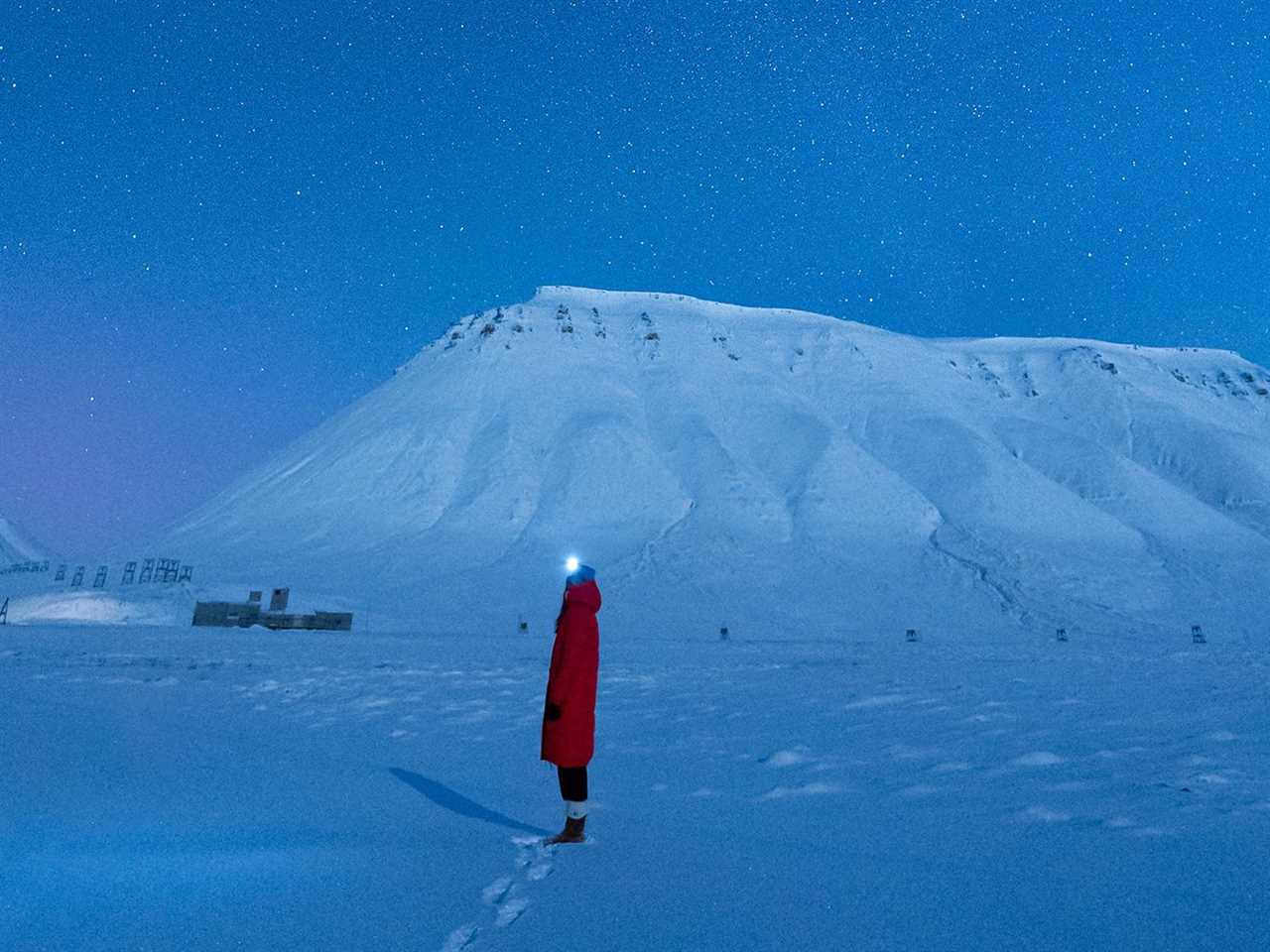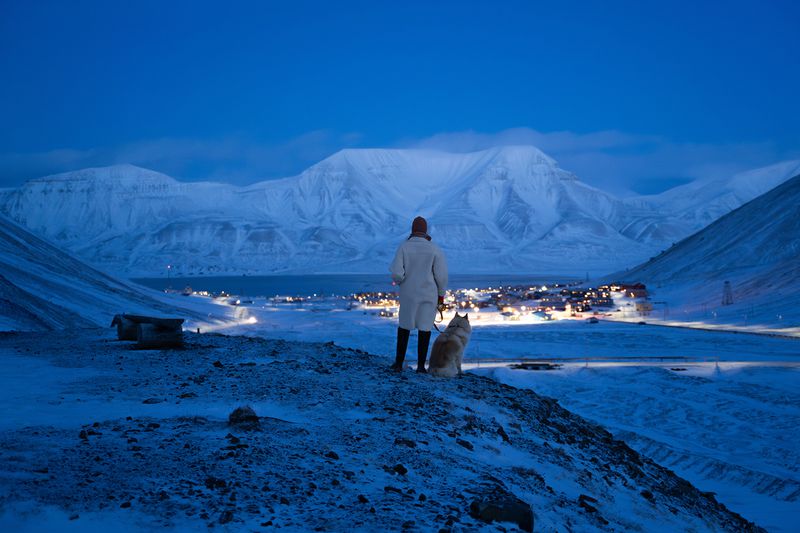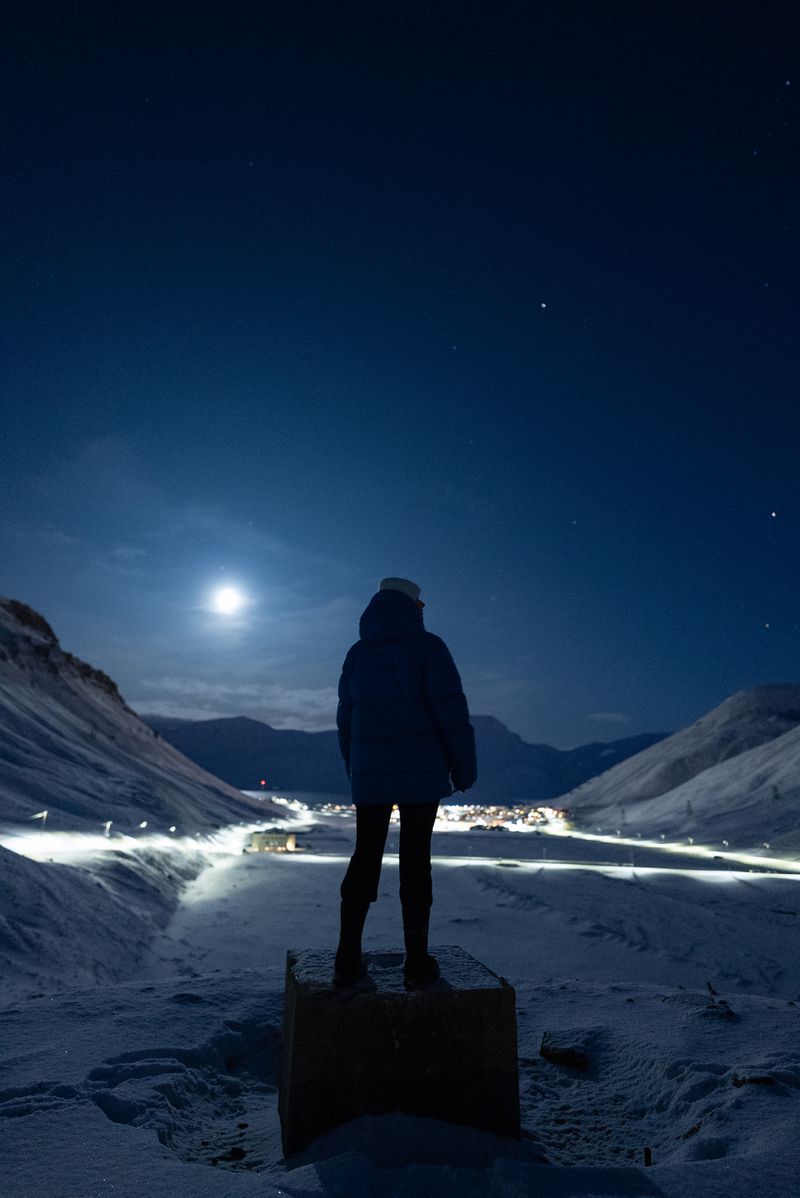
What seasonal affective disorder can tell us about ourselves.
“I get emotionally down with the short days and feel like hibernating,” says Annabel Lagasse. So she gets on her bicycle and heads up the hill to London’s Hampstead Heath, where the Winter Swimmers Club meets by a natural pond, come rain or shine; when we spoke in December the water, was 39 degrees Fahrenheit. Lagasse describes swimming in near-freezing water as visceral and sensual: “It’s an exciting shock. Afterward, you feel that calm, and a greater alertness too.”
There’s nothing like the dim light in the depths of winter to make us feel like we’re really just plants: We seek out the sun and wither without it. At its most serious, that moody winter tiredness is called seasonal affective disorder (SAD), which the Diagnostic Manual of Mental Disorders (DSM-5) lists as “Major Depressive Disorder with Seasonal Pattern.” The symptoms are similar to regular depression: sadness, loss of energy, difficulty concentrating, and hopelessness. But SAD has a few unique features too: an extreme desire for sleep, strong cravings for carbohydrates, and it’s strictly seasonal: SAD disappears entirely in spring. According to the American Psychiatry Association, up to 5 percent of people experience clinical SAD, which lasts about 40 percent of the year. Additionally, 10 percent to 20 percent get a milder version more fitting of the term “winter blues,” called subsyndromal SAD.
Lagasse’s pond mornings have become a beloved ritual: “When it’s cold, dark, and wet, you think you don’t want to go, but often it’s worse in your head than it actually is.” This is why experts recommend pushing yourself out the door in winter, to get the benefits of bright morning light. A course of SAD-specific cognitive behavioral therapy can also be very effective. You should always see a doctor if you’re struggling — SAD responds to antidepressants and can be every bit as serious as any mental health condition.
Scientists are still uncovering how SAD works, but the key is light. “SAD has been linked to the shortage of daylight,” says Timo Partonen, research professor at the Finnish Institute for Health and Welfare. In addition to sunlight, bright artificial light can be used for treatment — Partonen explains that you might be able to lessen the symptoms of SAD if you start using a light box omitting at least 10,000 lux a couple of weeks before symptoms tend to start. Just make sure to get in front of it before 10 am: “It should be at least five mornings a week, up to one hour each time,” says Partonen. Eight out of 10 people who have SAD see good results from light therapy, which has been found to reduce the amount of melatonin secreted into the bloodstream.
In the US, SAD increases the farther north you go: 1 percent of people in Florida and 9 percent in Alaska have SAD. But Europe is different: Partonen says that while only 1 percent to 2 percent of Central and Southern Europeans have SAD, there’s a lot more subsyndromal SAD: “In the Nordic countries, a larger portion of the population has milder SAD symptoms,” says Partonen, explaining that subsyndromal SAD is probably a physiological reaction, affecting people whose bodies are sensitive to light. “But when it comes to [full] SAD you also need to have a predisposition to depression.”
Light is crucial because of how it impacts the body clock. Your circadian rhythm doesn’t just impact alertness, but everything from blood pressure and glucose release to memory consolidation at night — all things that could impact your mental state.
Russell Foster, head of the Sleep and Circadian Neuroscience Institute at the University of Oxford, says we still don’t understand the fundamental causes of SAD. “In harsh winter conditions, we want to snuggle in, we want to conserve energy,” he says, “but is that driven by biology, or is it a social phenomenon?”
While SAD makes you tired, extra sleep isn’t restorative because what you really need is light. Foster, also the author of Life Time: Your Body Clock and Its Essential Roles in Good Health and Sleep, explains that we’re most sensitive to light at dusk and dawn — while light at lunchtime is nice, it hardly does anything to ground your body clock. “Dog owners are supposed to have lower rates of depression,” says Foster, who thinks the reason is clear: “You have to get out of bed and take them for a walk, and you get the morning light!”
Attitude matters too when it comes to SAD. “Developing new thought patterns can change the wiring in your brain,” says Kathryn Roecklein, an associate professor of psychology at the University of Pittsburgh. While trauma can cause depression in part because it changes our physiology, it works both ways: Positive habits can change our physiology as well.

Photo courtesy of Cecilia Blomdahl
Cognitive behavioral therapy (CBT) for SAD might work for up to 70 percent of people, says Roecklein. While general CBT aims to change unhelpful thinking about the self, SAD CBT focuses on thoughts and behaviors unique to winter. “A lot of people with winter depression have summer, spring, and fall activities they really enjoy [and miss]. One approach is to [find] winter activities that are similarly enjoyable, social, and maybe include physical activity,” says Roecklein. So if you can’t go cycling in winter, you could snowboard instead, and if you miss the heat, you could go to a steam room. Any CBT-trained therapist can create a SAD program; Roecklein recommends Kelly Rohan’s guide and workbook.
Even if the arrival alongside the November gloom is a dead giveaway that it’s SAD, depression rarely exists in a vacuum. “If there are parts of your life that particularly bother you [when you have SAD] ... you might want to do some thinking, feeling, reconsidering,” says Jennifer Griesbach, a therapist in New York City and teacher at Gestalt Associates for Psychotherapy.
While no one actually wants to be moody and Netflix-bound for months every year, self-care for SAD can start to feel like going against nature. After all, seasonality is only natural, and bears in hibernation don’t drag themselves to spin class.
“This is a problem not just with SAD, but of living in the 21st century,” says Griesbach. “How do we work with the difference between what society wants for us and what our bodies want?” Griesbach recommends experimentation and paying close attention to how we feel afterward: “Sometimes you need to go to bed early, and sometimes you need to go out. It’s hard to tell the difference, but we can get better at it.”
Chasing the light isn’t the only way to enjoy winter. Darkness is truly magical for Cecilia Blomdahl, whose YouTube channel documents her life on Svalbard, a Norwegian island close to the North Pole that experiences two and a half months of darkness during polar night. “I look forward to polar night like a kid looks forward to Christmas,” says Blomdahl, who left her native Sweden eight years ago. “I see this as a season to slow down and appreciate the serenity the darkness brings. There’s so much beauty in the darkness.”

Photo courtesy of Cecilia Blomdahl
Blomdahl admits polar night comes with challenges: “There’s nothing telling your body to wake up, so naturally, all I want to do is sleep!” A wake-up light helps, as does sticking to healthy routines. Blomdahl learned that in 2021, during one particularly tough polar night: “I’d just started my own business and was very stressed, and didn’t have a good routine at all. That really showed me the importance of a good sleep schedule and prioritizing things that make me feel good, like exercise and being outdoors.”
If the idea of strong-arming yourself to be active when your body just wants to cosplay as a couch cushion still just feels plain wrong, you might be intrigued to learn that even for people who don’t have SAD, “feeling like it” isn’t required to enjoy winter. “Last night I went outside at 6 pm and it was 14°F. You do have to force yourself,” says Trude Witzell, a photographer living in Trondheim, Norway. “Of course, after dinner, you just want to go to bed when it’s cold and dark like this!” (This interview was conducted in Norwegian and has been translated into English by the author.)
Hibernation isn’t the solution; researchers were confident about this, as we’re creatures driven by light. Winter requires many of us to work a little harder, though. SAD can make it difficult to tell whether we should be pushing ourselves out the door for a bundled-up morning walk across a frosty park, or if this is the night for lighting a candle while reading under a blanket. But we can use this slightly more difficult season to learn how to listen to ourselves and do what will truly make us feel good.
Most evenings, Witzell heads down to the fjord for a swim, often in the dark because at midwinter, the sun sets at 2:30 pm: “It’s incredible to lie back and look at the dark sky.” Norwegians have a saying, dørstokkmila, meaning the doorstep mile, that is especially relevant this time of year: “The hardest step to take is the one out your front door.”

Photo courtesy of Trude Witzell
----------------------------------------
By: Jessica Furseth
Title: How to handle the winter blues, no matter where you live
Sourced From: www.vox.com/even-better/24070588/seasonal-affective-disorder-mental-health-how-to-handle-winter-blues
Published Date: Sat, 17 Feb 2024 11:00:00 +0000
Did you miss our previous article...
https://consumernewsnetwork.com/politics-us/june-4-donation-drop






